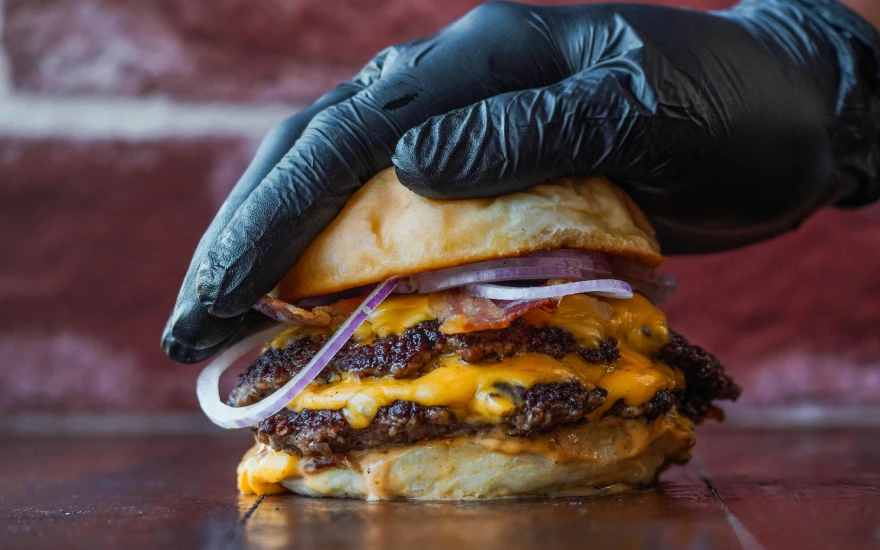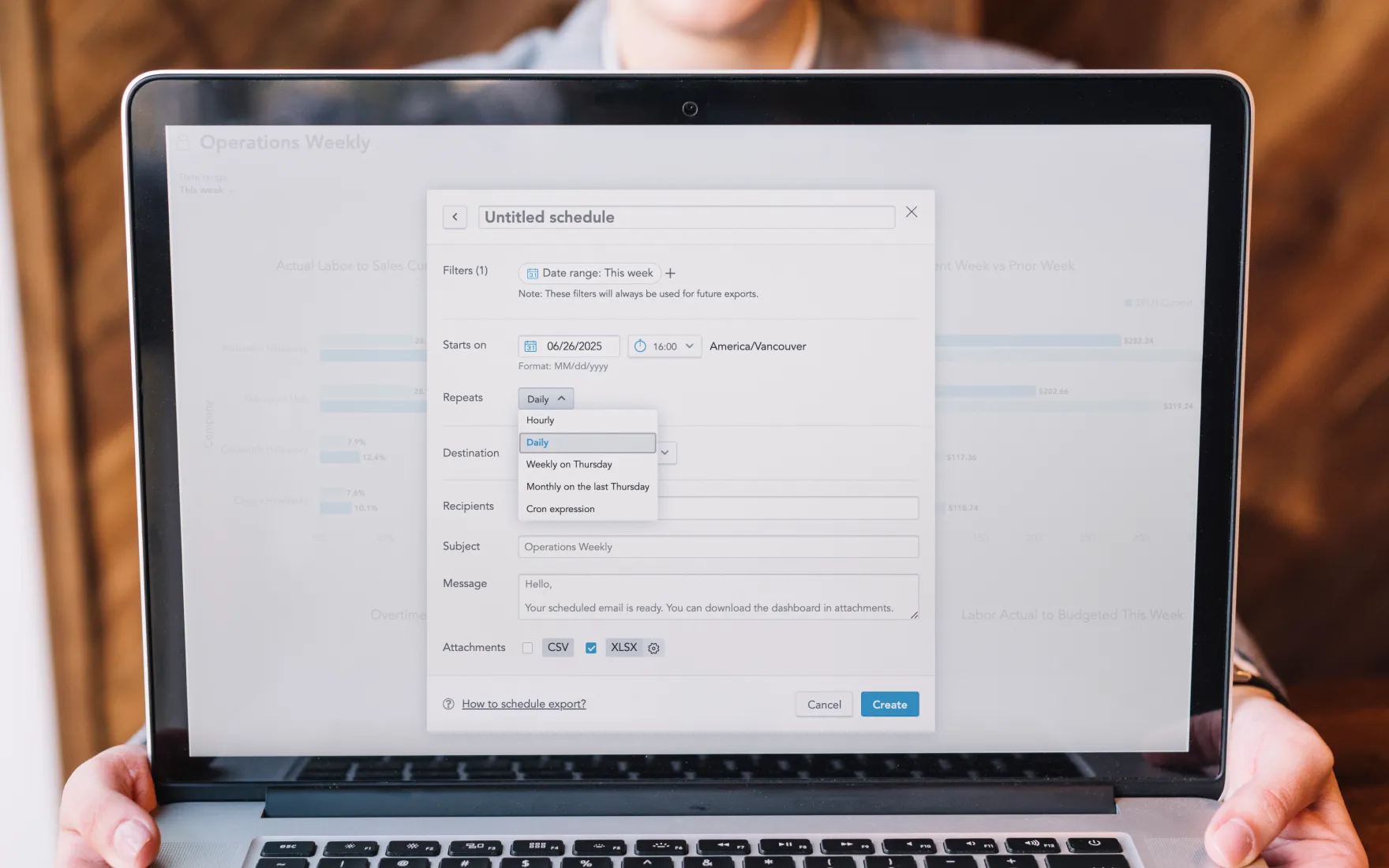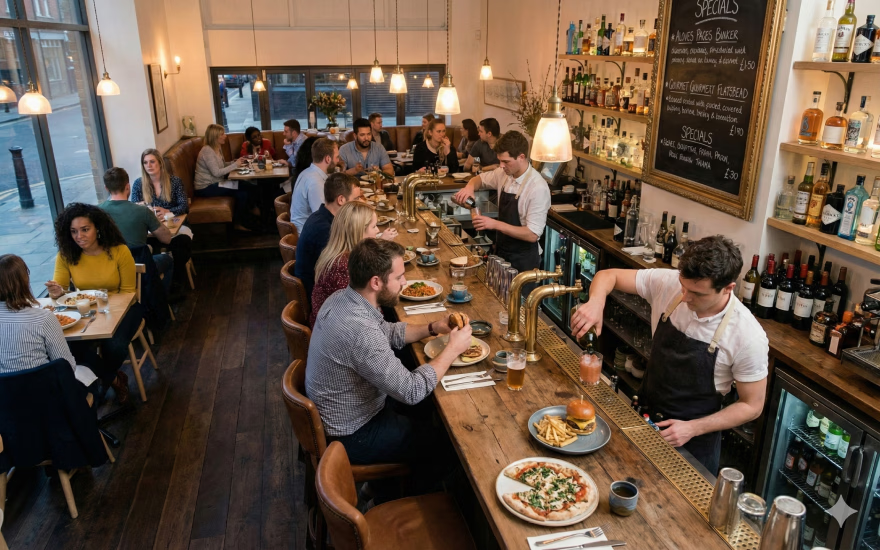What Is a Smash Burger? A Detailed Guide for Restaurant Owners and Chefs

Smash burgers are sizzling their way onto restaurant menus across North America — and for good reason. These thin, flavorful patties are known for their signature crispy edges, juicy interior, and crave-worthy simplicity. Compared to traditional burgers, smash burgers offer a fast-cooking, high-margin, and highly customizable alternative that’s tailor-made for modern restaurant operations.
What Is a Smash Burger and Why Is It Trending?
A smash burger is a thin beef patty cooked by smashing a loosely packed meatball onto a hot griddle, creating maximum surface contact for browning. The result is a crispy, flavor-packed crust formed through the Maillard reaction — a chemical process that intensifies umami and delivers that iconic seared flavor.
Unlike thicker, stacked burgers, smash burgers highlight bold flavor in a simplified form. They’re typically served with classic toppings and artisan buns, emphasizing texture and taste over bulk.
Smash Burger vs. Regular Burger: What’s the Difference?
- Cooking Method: Smash burgers are created by pressing beef onto a hot griddle immediately, while regular burgers are formed and grilled or cooked without being compressed.
- Texture: The smashed technique creates a crispy, lace-like crust on the patty’s edge, unavailable in thicker counterparts.
- Thickness: Smash burgers are much thinner, often allowing for double-stacking without overwhelming the palate.
- Cooking Time: With shorter preparation time — typically 2–3 minutes per patty — smash burgers are operationally faster to execute.
What’s the Maillard Reaction and Why Does It Matter?
The Maillard reaction is the browning process that occurs when proteins and sugars in food react under high heat. It's what gives seared meats, toast, and roasted coffee their distinct depth of flavor. Because smash burgers create more surface contact with the heat source, they foster more browning — and more flavor — than standard patties.
According to culinary experts at the Culinary Arts Academy Switzerland, it’s this scientific principle that gives smash burgers their stand-out appeal.
How Do You Make a Smash Burger Step-by-Step?
Executing a perfect smash burger requires the right approach — and consistency is key when scaling in a restaurant kitchen.
What Tools Do You Need to Make a Great Smash Burger?
- Flat-Top Griddle or Cast Iron Skillet: Retains heat evenly and allows maximum surface contact.
- Heavy-Duty Spatula (Smashing Tool): Should be firm, wide, and ideally metal to evenly press patties.
- Parchment Paper: Prevents the beef from sticking during the initial smash.
- Thermometer: Ensures even cooking and food safety.
What’s the Best Type of Beef for Smash Burgers?
Use ground beef with at least 20% fat — typically 80/20 beef is ideal. The higher fat content keeps the burger juicy and contributes to better searing.
Step-by-Step Smash Burger Process:
- Preheat your griddle or cast iron skillet to around 400°F to 450°F.
- Roll the ground beef into loosely packed 2-oz to 3-oz balls.
- Place the beef ball on the hot surface — no oil needed.
- Use parchment and a spatula to smash the beef flat (about ¼ inch thick).
- Cook for 2–3 minutes without moving.
- Flip once; add cheese (if desired), and cook for 1 minute or until internal temp reaches 160°F.
- Serve immediately on a toasted bun with preferred toppings.
What Are the Benefits of Adding Smash Burgers to Your Menu?
Bringing smash burgers to your menu is more than a culinary decision — it’s a business opportunity.
Are Smash Burgers More Profitable Than Regular Burgers?
Yes. Smash burgers often cost less to produce yet can command a premium selling price due to their trendy status and gourmet flavor profile. With minimal ingredients — high-fat ground beef, buns, cheese, and toppings — margins are solid. According to RestaurantOwner.com, smash burgers can deliver gross profit margins up to 75%. Source: RestaurantOwner.com, 2023
How Do Smash Burgers Optimize Kitchen Performance?
- Speed: Thin patties cook in minutes, cutting cook times in half.
- Scalability: Limited prep and repeatable steps make it easy to train line cooks.
- Cross-Training: Simplified techniques allow new staff to pick it up quickly. You don't need to worry about crafting a perfectly round burger.
What Are the Best Smash Burger Recipe Variations?
One of the standout advantages of smash burgers is their versatility, which allows operators to tailor menus to local preferences or expand offerings cost-effectively.
Cheesy Double Smash Burger
A customer favorite — two seared patties layered with American cheese, pickles, and grilled onions. The melted cheese creates a glue-like hold that keeps shifts in place during service and delivery.
Spicy Smash Burger
Add jalapeños, pepper jack cheese, or chipotle mayo to kick up the heat. This appeals to younger consumers looking for bold flavors.
How Can You Make a Plant-Based Smash Burger?
Use plant-based ground meat blends that mimic the fat content and browning potential of real beef — typically products like Impossible Burger or Beyond Meat. These provide similar sizzle and crust while meeting vegetarian demand.
What Toppings Work Best for Flavor and Texture?
- Classic: Lettuce, tomato, pickle, grilled onions
- Lux: Aiolis, smoked cheese, fried egg
- Viral: Hot honey, bacon jam, or kimchi slaw for social media engagement
Where Did Smash Burgers Originate?
The origin of the smash burger traces back to the 1960s in Ashland, Kentucky at Dairy Cheer, where a cook used a bean can to press burgers — unintentionally unlocking a new flavor frontier.
Smash burgers gained underground popularity through diners and local joints before hitting the mainstream via food trucks and fast-casual chains. The nostalgic Americana aesthetic has fueled their resurgence, aligning with customer sentiment for fast, flavorful, and visually appealing comfort food.
What Kitchen Setup Is Ideal for Cooking Smash Burgers?
Optimizing your kitchen for smash burger production doesn’t necessarily mean major investments, but planning is key.
What Griddle Temperature Ensures Perfect Sear?
Maintaining a surface temperature between 400°F and 450°F ensures the beef crusts quickly without overcooking. A too-cool surface leads to steaming rather than searing.
Can You Scale Smash Burger Production in a High-Volume Kitchen?
Yes. Flat-top griddles with multiple heat zones allow for batch cooking. A systematized approach — weigh meat in advance, pre-set portion sizes, and assign staff to either smash, flip, or top — maximizes line efficiency and maintains consistency.
How Can Staff Be Trained to Prepare Consistent Smash Burgers?
Smash burgers are well-suited for restaurants that rely on part-time or cross-trained labor because the method is simple, visuals are obvious, and timing is short.
Tips for consistent execution:
- Step-Based Training: Use clear SOPs with 3–5 steps.
- Visual & Tactile Cues: Train staff to recognize the sound of the sizzle and visual crust formation.
- Time-Based Cooking: Set standardized cook times (e.g., 2.5 minutes first side, 1 minute second side).
Digital scheduling and task management platforms, such as Push Operations, make it easier to align training tasks with shift assignments and onboard staff efficiently.
What Mistakes Should Restaurants Avoid with Smash Burgers?
Even simple recipes can go sideways without attention to best practices.
- Resmashing After the Initial Press: Pressing after flipping squeezes out moisture and leads to dry patties.
- Inconsistent Portions: Irregular sizes create uneven cook times and unpredictable quality.
- Skipping Preheat: A cold griddle or pan prevents the Maillard reaction and leads to soggy results.
Avoiding these missteps ensures every customer gets the flavor-packed crunch they expect.
What Customer Experience Benefits Do Smash Burgers Offer?
Smash burgers aren’t just operationally efficient — they’re Instagram gold. Their crispy edges, gooey cheese melts, and indulgent toppings create a perfect moment for social sharing.
Customer Benefits Include:
- Flavor and Texture: Thin patties with caramelized crust create fuller flavor impact per bite.
- Pairability: Goes great with loaded fries, house shakes, or signature dips.
- Trendy Appeal: Aligns with retro dining and social media food culture, increasing organic buzz.
Encouraging user-generated content and plating smash burgers in visually compelling ways can build engagement and drive trial.
Conclusion: Should Your Restaurant Add Smash Burgers to the Menu?
Smash burgers offer the sweet spot of culinary appeal, operational efficiency, and scalable training potential — making them a strategic addition to virtually any modern restaurant menu. From quick-service chains to boutique diners and food trucks, their crave-worthy flavor and quick cook time check all the boxes for profit-driven menu planning.
When properly executed, a smash burger can do more than deliver deliciousness — it can streamline kitchen operations, improve employee onboarding, and create high-margin offerings that support long-term growth.
Ready to fire up operations? Push Operations equips restaurant teams with digital tools that simplify hiring and onboarding, ensure consistency, and make scaling your smash burger business a sizzling success. Book a demo with Push to get started!



